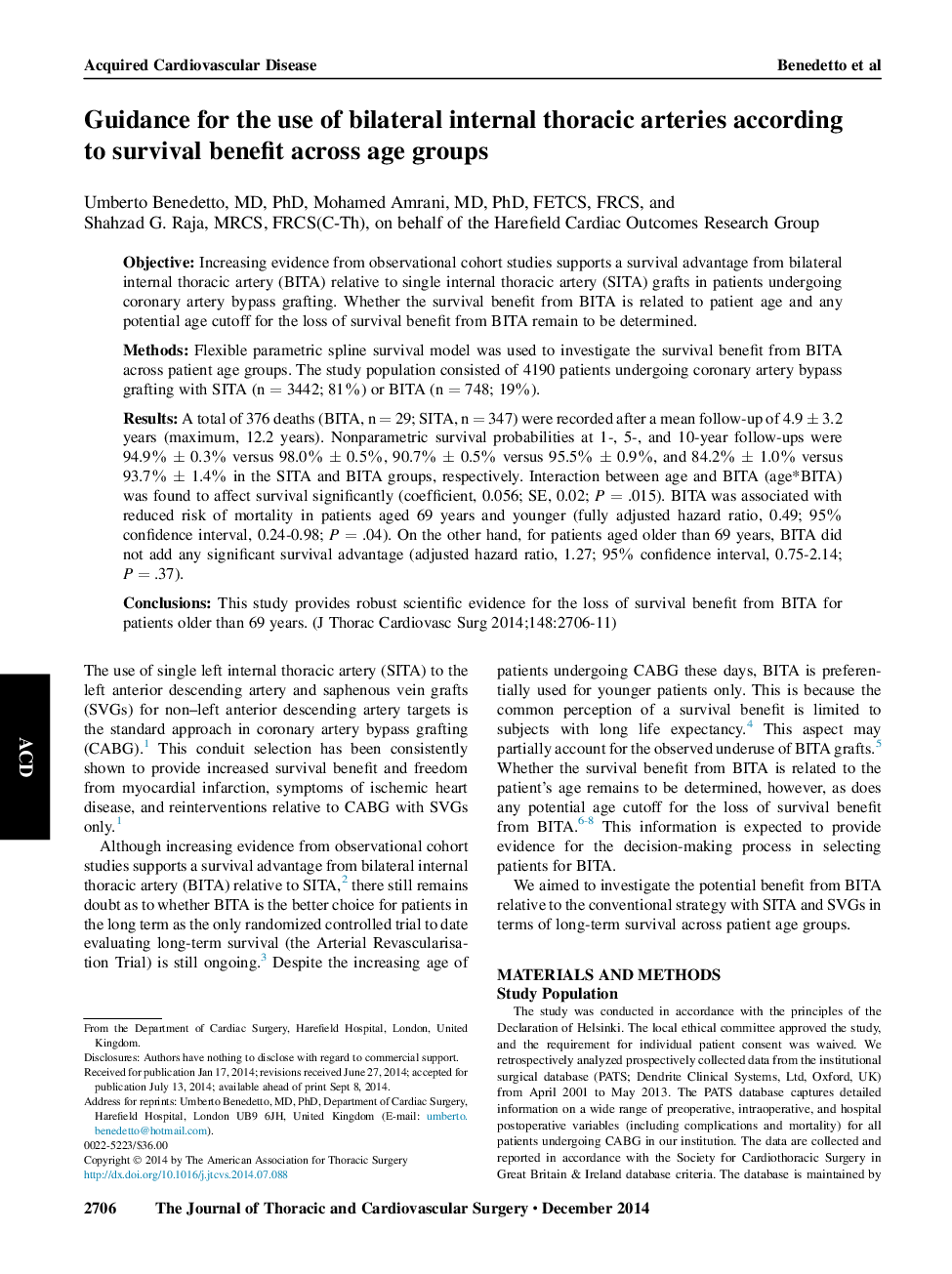| Article ID | Journal | Published Year | Pages | File Type |
|---|---|---|---|---|
| 5989779 | The Journal of Thoracic and Cardiovascular Surgery | 2014 | 6 Pages |
ObjectiveIncreasing evidence from observational cohort studies supports a survival advantage from bilateral internal thoracic artery (BITA) relative to single internal thoracic artery (SITA) grafts in patients undergoing coronary artery bypass grafting. Whether the survival benefit from BITA is related to patient age and any potential age cutoff for the loss of survival benefit from BITA remain to be determined.MethodsFlexible parametric spline survival model was used to investigate the survival benefit from BITA across patient age groups. The study population consisted of 4190 patients undergoing coronary artery bypass grafting with SITA (n = 3442; 81%) or BITA (n = 748; 19%).ResultsA total of 376 deaths (BITA, n = 29; SITA, n = 347) were recorded after a mean follow-up of 4.9 ± 3.2 years (maximum, 12.2 years). Nonparametric survival probabilities at 1-, 5-, and 10-year follow-ups were 94.9% ± 0.3% versus 98.0% ± 0.5%, 90.7% ± 0.5% versus 95.5% ± 0.9%, and 84.2% ± 1.0% versus 93.7% ± 1.4% in the SITA and BITA groups, respectively. Interaction between age and BITA (age*BITA) was found to affect survival significantly (coefficient, 0.056; SE, 0.02; P = .015). BITA was associated with reduced risk of mortality in patients aged 69 years and younger (fully adjusted hazard ratio, 0.49; 95% confidence interval, 0.24-0.98; P = .04). On the other hand, for patients aged older than 69 years, BITA did not add any significant survival advantage (adjusted hazard ratio, 1.27; 95% confidence interval, 0.75-2.14; P = .37).ConclusionsThis study provides robust scientific evidence for the loss of survival benefit from BITA for patients older than 69 years.
